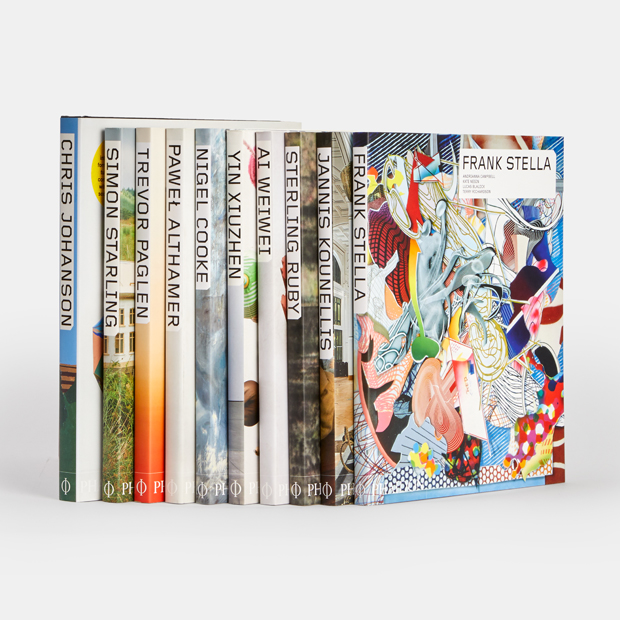
25 things we learned from 25 years of our Contemporary Artist Series
Did you know about Wolfgang Tillmans’ short spell in social care, Yayoi Kusama’s Broadway musical, Kerry James Marshall’s brush with Hanna Barbera, Jonas Wood’s highly illegal ingredient, Paul McCarthy’s unlikely Vietnam link and Trevor Paglen’s days as punk club promoter?
If you want to gain a deep appreciation for contemporary art, you really need to take a deep dive into our Contemporary Artist Series. The engrossing monographs began back in 1995, and have since served to profile and contextualise the brightest and the best painters, sculptors, performance, video and installation artists, from Antony Gormley to Ai Weiwei, Jenny Holzer to Marina Abramović.
To mark a quarter century since the series began, we’re pulled out 25 intriguing numbers from the more recent titles in this series. Read on to find how Wolfgang Tillmans dodged the draft, which celebrity restaurateur Yayoi Kusama almost went into business with, and what Sterling Ruby likes to do with drug tests.
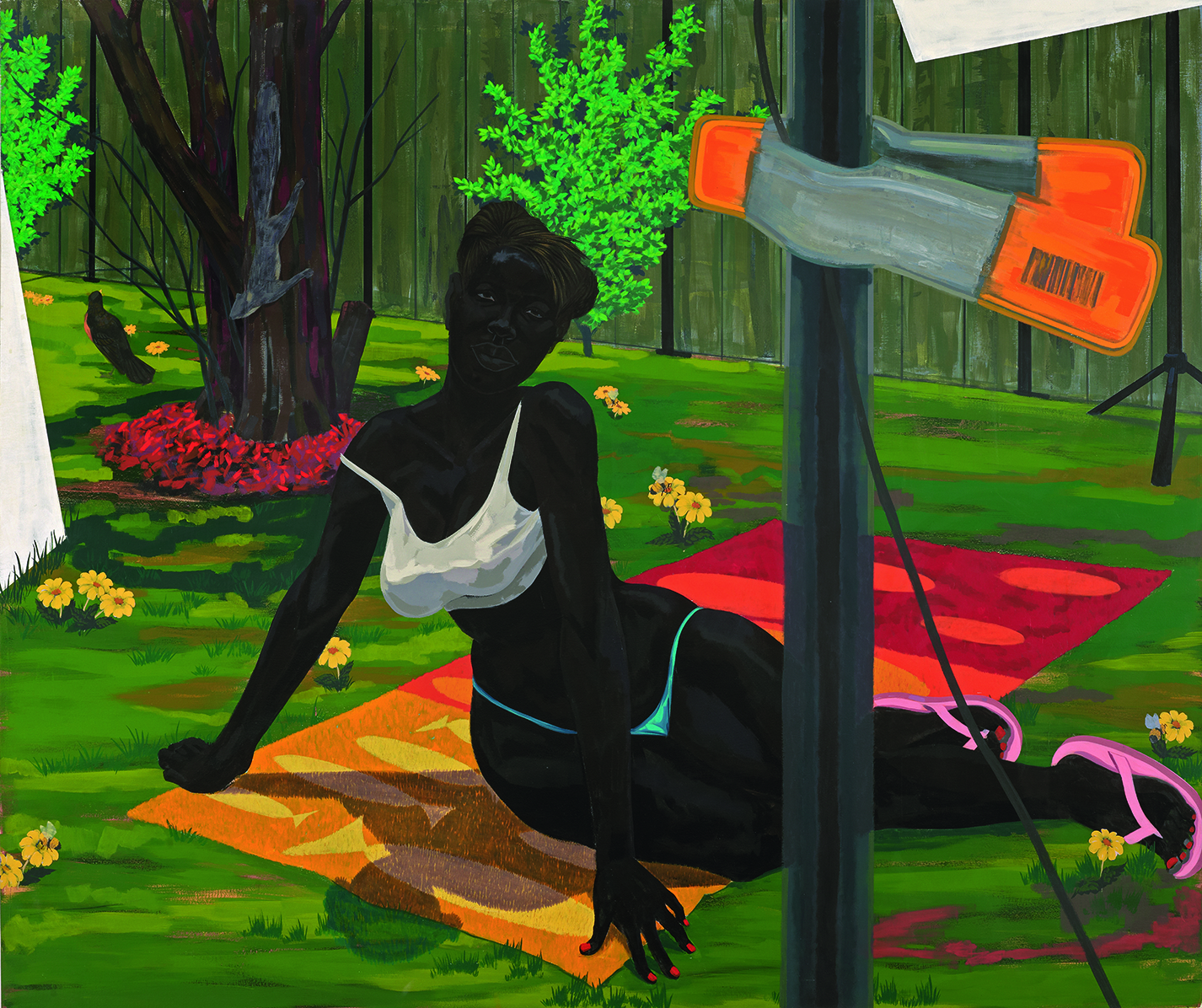
One of Kerry James Marshall’s most influential art teachers created the backgrounds for the Hanna-Barbera cartoon, Huckleberry Hound “I signed up for a Saturday painting class with a man named Sam Clayberger; he was a painter of nudes basically. My approach to colour derives almost exclusively from the way Clayberger thought about and used colour. I didn’t know until about a year ago that he was an animator who had worked for Hanna-Barbera. This made sense; there was something about his colour sense that seemed right for cartoons. He was the first person I heard talk about the way you use colour instrumentally."
Wolfgang Tillmans was a conscientious objector, and so did not have to undertake military service. Instead he did some social work, in Hamburg “For the first ten months I worked for a mobile social health service, helping nurses wash patients, doing cleaning for old or disabled people living at home, doing light medical and social work in old people’s homes.”
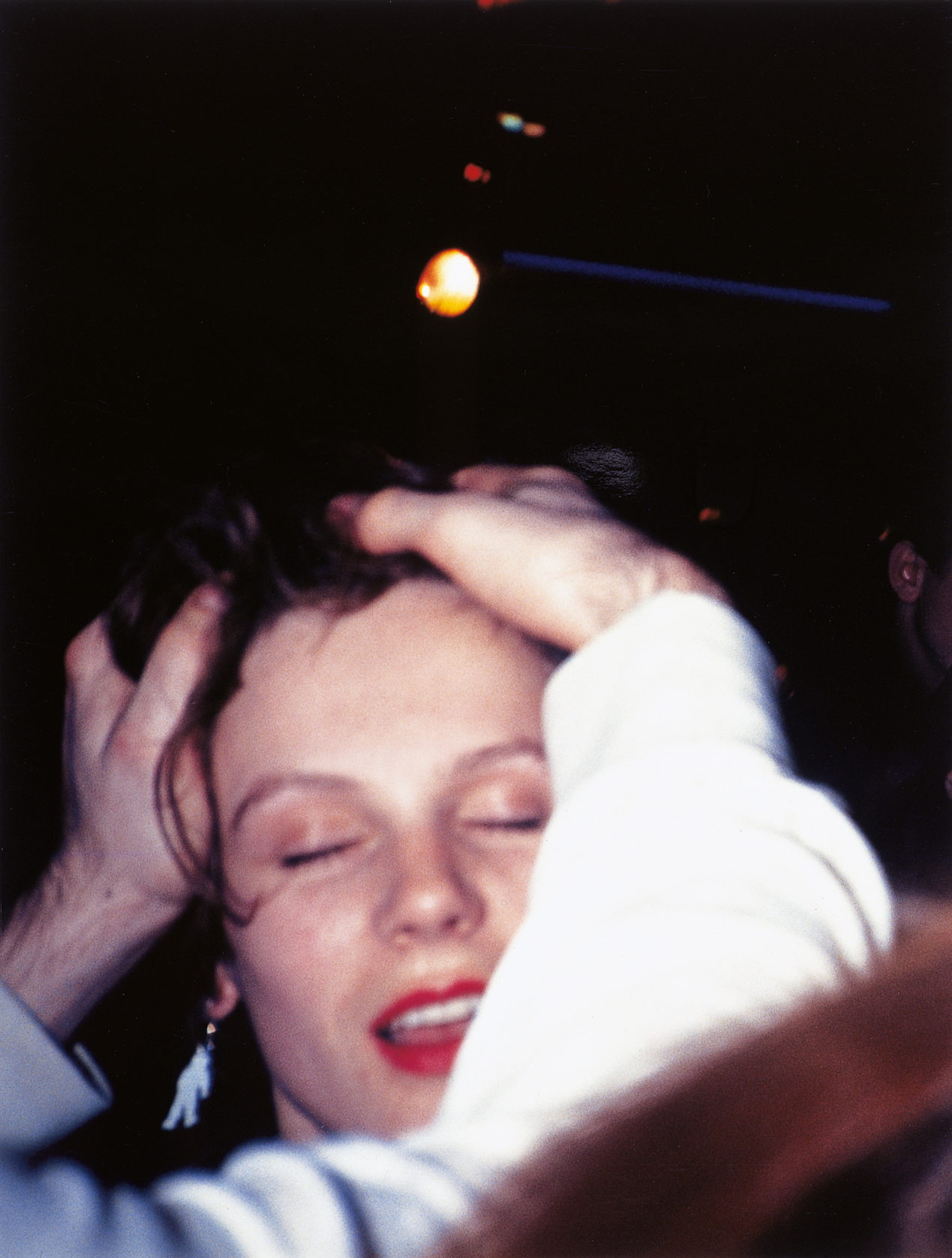
Yayoi Kusama planned to stage a Broadway musical with the help of the celebrity restaurateur Rocky Aoki “I was planning a Broadway musical entitled Tokyo Lee Story. The protagonist, Tokyo Lee, was me. Rocky Aoki and I attempted to set up a fund-raising company. We lined up the actors and stagehands, but then, in late 1969, I became sick again.”
Cecily Brown is rather keen on photocopiers “Most of the work I made while in New York [as an exchange student in 1992] wasn’t painting. I was doing a lot of drawing and watercolour, gouache, and then I’d go off to the copy shop. I’d got really into colour Xerox because it was cheap here. I love Basquiat, and all those Xeroxes: that sort of nursery-school look of a colour Xerox. That’s still one of my favourite media.”
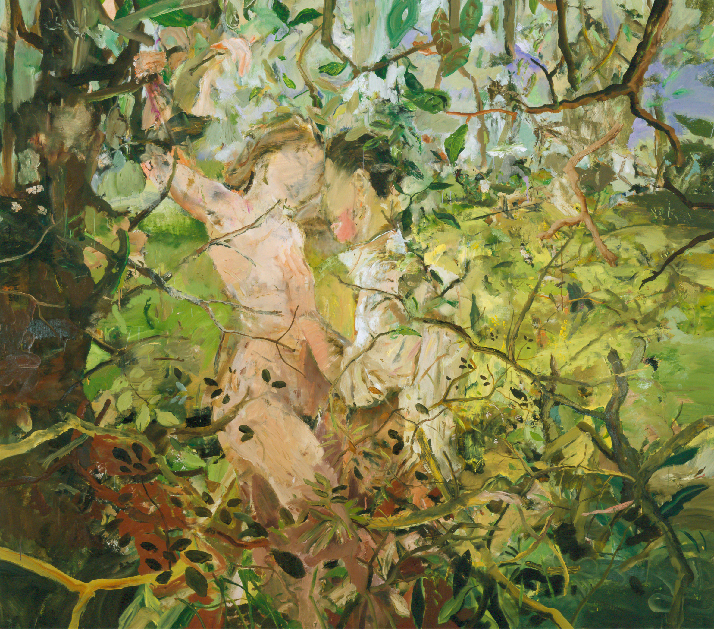
Daan Roosegaarde used to hang out in Piet Mondrian’s house “I used to volunteer at the Mondrian House in Amersfoort, where he was born. They built a replica of his French studio. I’d go there after school, take some books and read them in his studio. I felt that was the best way to get to understand him.”
Sharon Hayes’ multidisciplinary approach to her art is in part inspired by the AIDS crisis “I saw what happens when there is collective labour over a crisis, over a problem, over an epidemic. That labour was so generously, passionately and fearfully and almost inadequately realized. And when I say inadequate, I don’t mean to undermine the expansive work that AIDS activists did in so many different territories of concern. Rather, I mean a movingly improvisational space in which so-called amateurs worked to take hold of discourses and drugs; a space in which so-called amateurs became experts to compensate for the absence of governmental and institutional action. Nobody started as an expert in that space. That’s something that I learned – that everybody was becoming. They were training themselves in the work that was necessary at that moment, and that training was not instrumental. It was generated from the concerns in the room, and from the bodies present.”
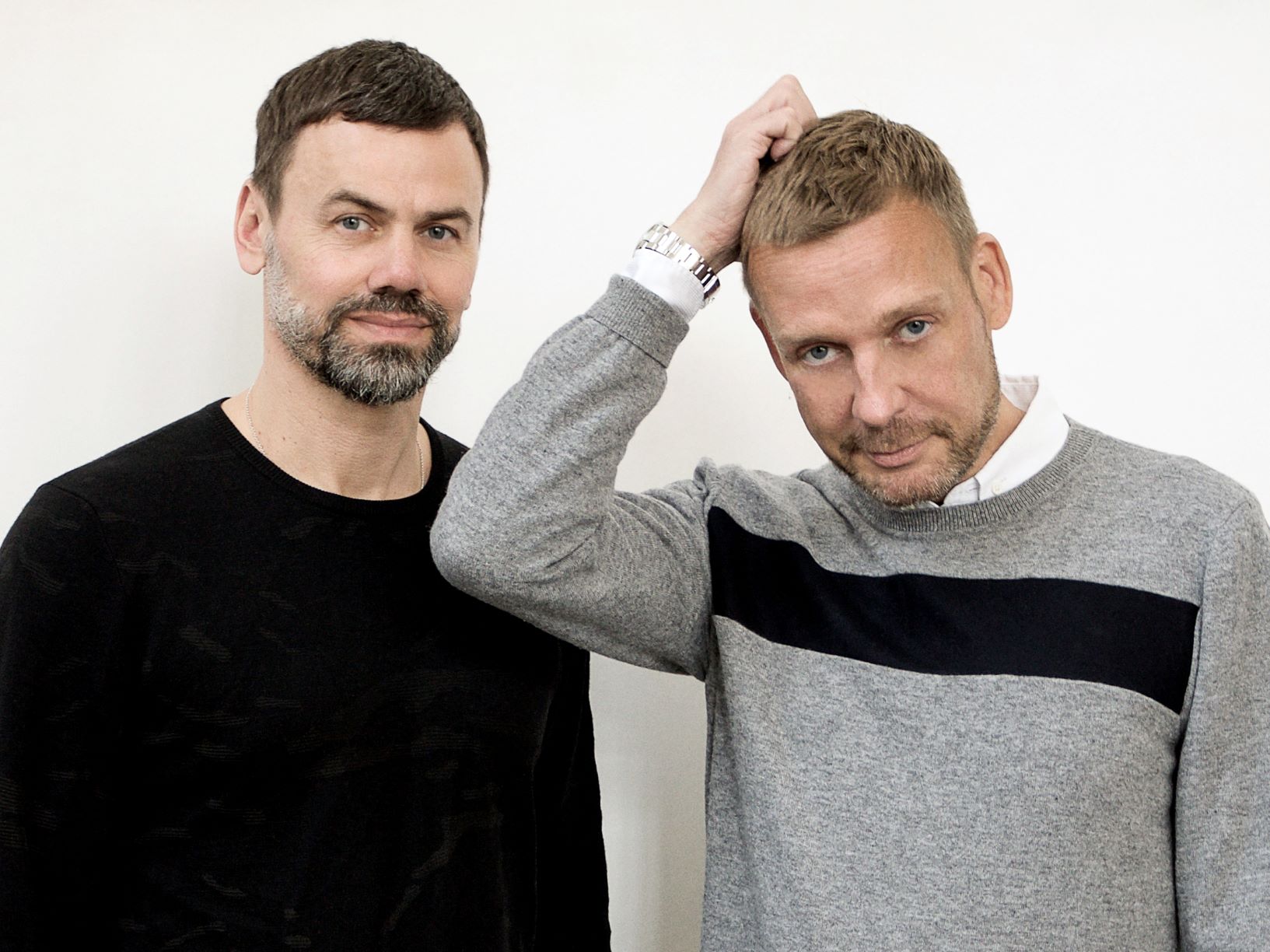
Elmgreen & Dragset once made a building designed specifically for anonymous sex "The Cruising Pavilion in Aarhus was in 1996. The city festival invited a number of artists to do what was supposed to be public sculpture. Our idea was to give them a pavilion shaped as a white cube. We placed it in an area where gay guys who were cruising had been harassed by the police. Park authorities had been cutting down bushes, because they didn’t want that activity to go on, and then we thought, ‘Why don’t we make a white cube that looks very inviting and nice?’ It had light blue vinyl on the floor. It had white wooden walls that created a maze inside, perforated with glory holes at different heights. And in the inner part of that maze, you’d have a little bench of cherry wood and a skylight, so you could also see the stars and be romantic."
Adam Pendleton might be a contemporary artist, but he thinks about the First World War quite a bit in his Black Dada project “Moving on from the horrors of World War I. That’s the core of the Dadaist impulse – ‘We can’t ignore these horrors, but let’s move on anyway’. A lot of this is about distraction, and playing with distraction and focus.”
Lili Reynaud-Dewar studied law at university, and this helped with her art “It’s only now I realize my work raises issues that could come under the heading of Public Law: what can be said in a public space, what defines the space, what one is able to do in it, what politics operate in a collective space. Is art political, is it collective?”
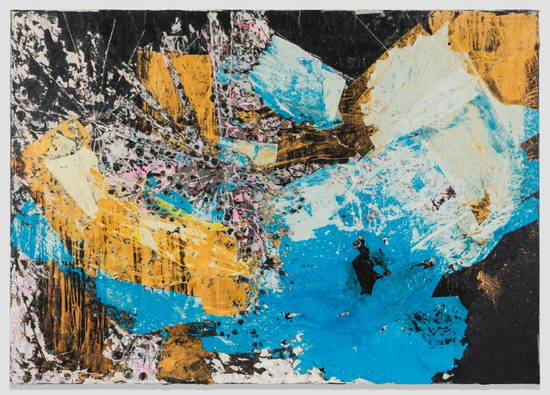
Mark Bradford has been to a lot of nightclubs “I went to all of them. Gay, straight, black, white, Mexican, Chinese, you name it. I liked nightclubs. It was the same feeling I had in the beauty shop. It was this public space where all these private things were going on. People could be whoever they wanted to be. A woman who’s working in a bank every day could put on this disco dress, go to the club and shimmer all night. She could do her thing. She could have a different name. I didn’t care what her name was. I was like, ‘You look fabulous. Let’s twirl all night long.’ I love that space of creativity and being anonymous at the same time. Although I got labelled as girls do – fast, street, promiscuous, all that stuff –I liked going out and dancing and being in the nightclubs.”
Paul McCarthy’s studio used to serve as a recruitment centre for the Vietnam War “The building was in the middle of L.A. It was empty and had previously been the induction centre for World War II and Vietnam. It still had lines on the floor – follow this line to the psychiatric testing area, you know...”
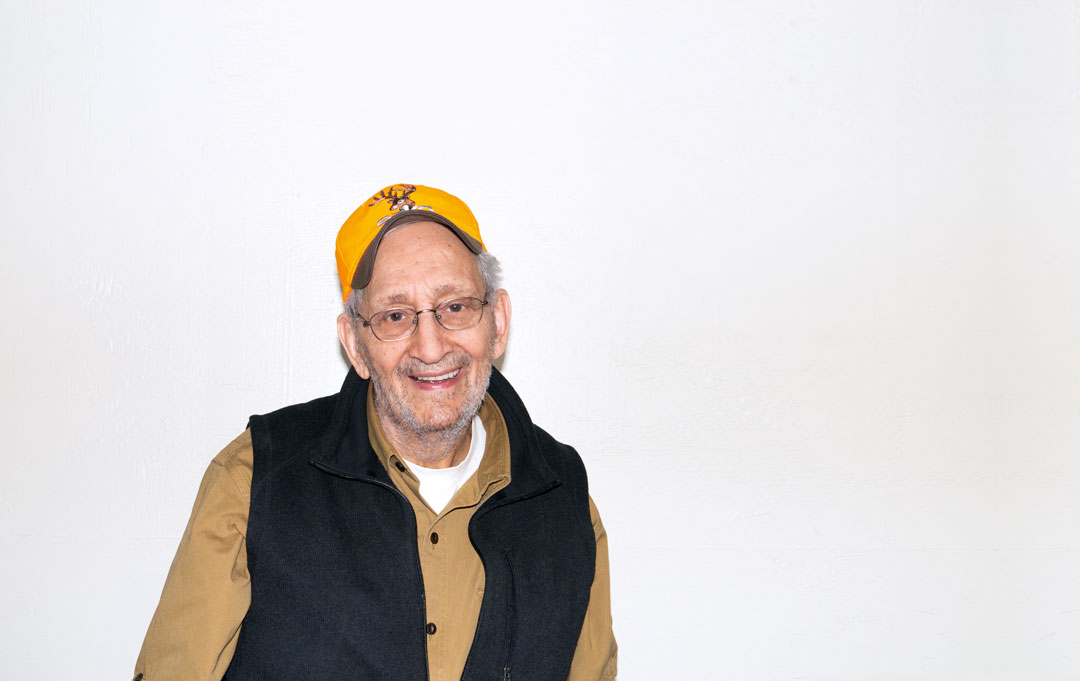
Frank Stella doesn’t think much of the 1990s “I think that in the 1990s, painting was losing traction—at least in the amount of attention it was getting and the effect that it had on the art that was being made. The older painters at that time like Helen Frankenthaler, the color-field painters, were invested in what seemed to me to be open and beautiful, but even this was disappearing. Painting was reverting to being, if it was painting at all, solely gestural: one could think here of Schnabel and Basquiat. This was timely painting and plenty interesting, but it wasn’t very open; it was, again, sort of digging into the painting rather than letting the paint move. Conceptual painting. There was a loss of the dynamic that might have had potential. To me, it seemed obvious that the new emphasis in painting didn’t have that much of a chance of moving forward.”
Sterling Ruby sometimes includes drug-test kits in his sculptures “I bought those seven years ago because I was interested in the way that the American government is treating drug addiction and how workers were always being checked for chemical abuse. But I pulled them out again later and started using them in a completely different way. The tests are all based on these colour systems and identifiers, so I am now using them more for their formal qualities.”
Sarah Sze thought quite a bit about windows when planning her 2013 representation for the USA at the Venice Biennale “In contemplating how to project the space through the window I learned a lot from painters like Matisse and Vermeer, who loved to play with the window. Matisse used windows as frames within frames, stepping out of the interior to the exterior. Vermeer’s windows are compositional jumping-off points in deep space, where the eye moves from a milk bottle to a map of the world, out of a window to the sky.”
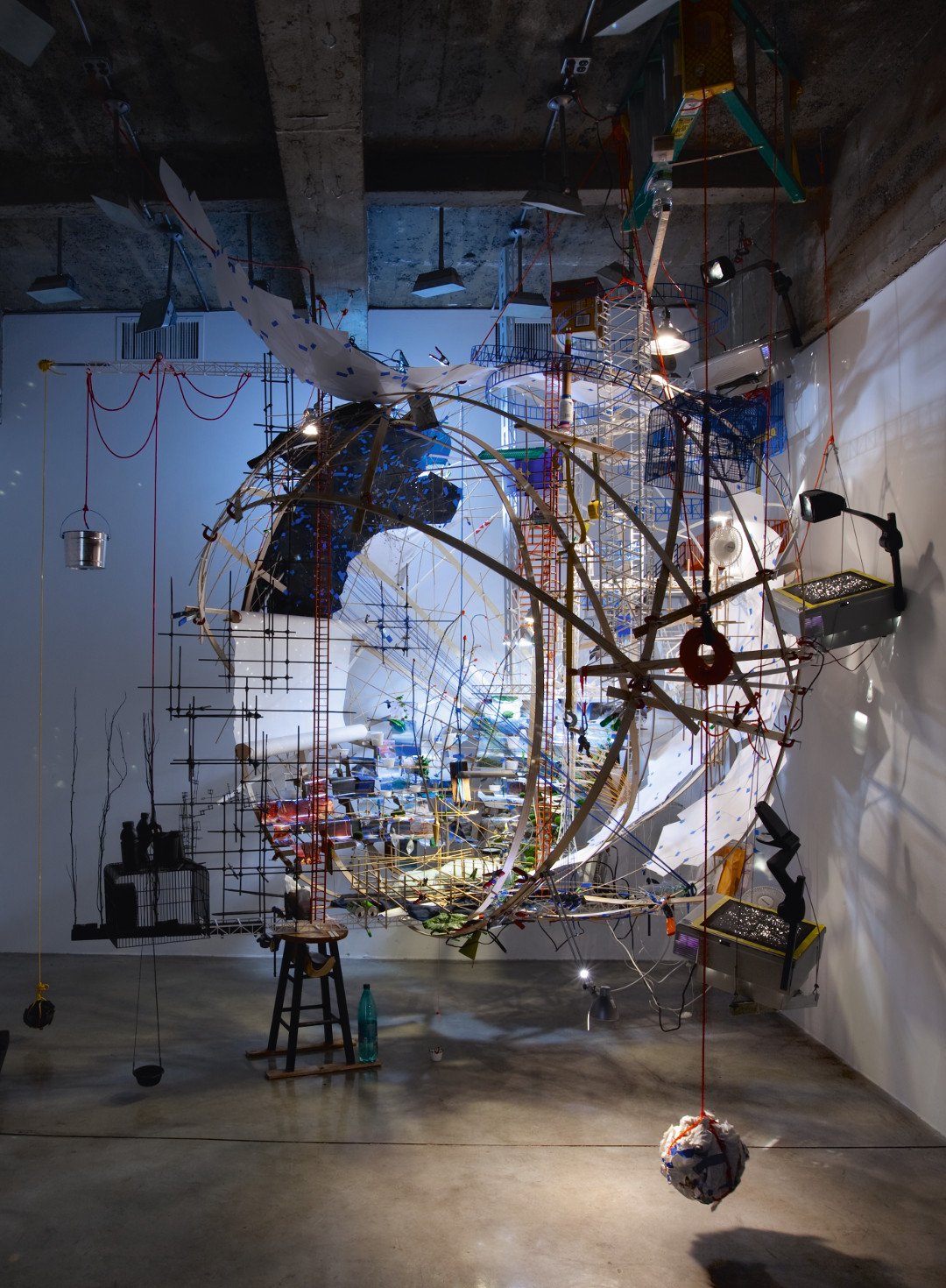
Bernar Venet met Marcel Duchamp, and walked away with a personal pun and an artwork “I was describing to him a work I’d made in February of that year. It was a recording of the Annual Meeting of the American Physics Society conference. I decided to present this conference as a work of art and, while I was trying to explain what had justified this idea, in particular that of presenting a work that had no physical aspect (sound only), Duchamp cut off my speech and told me in an amused tone: ‘But you are an artist who sells wind.’ I didn’t understand what he meant. I must have looked very surprised. The fact that this work could be sold was very far from my intention and, moreover, I didn’t really like the idea that what I was doing was ‘windy’ – or was he referring to the idea that he himself had made a small work entitled Air de Paris? I didn’t know what to say. Then Duchamp, still smiling, wrote on a corner of his journal the following sentence: ‘La vente de vent est l‘event de Venet’ (‘The sale of wind is Venet’s event’). We laughed at this improvised word play, at which Duchamp was the master. Three times the letters E.N.E.E.V.T. in different orders in such a short sentence – well done! I was amazed by his ability to improvise so easily, as the conversation progressed, a perfectly appropriate play on words.
“More than three hours had just passed. Before leaving him, Duchamp generously dedicated the cover of the magazine Transition (1937) that reproduced the comb on which the sentence is written, ‘3 or 4 drops of height have nothing to do with savagery.’ I’d taken it with me because [French artist] Arman had given me this book the year before and said to me, ‘If one day you meet Duchamp and he signs this cover for you, you’ll have a work of his.’ Good instinct! But I didn’t dare ask him to cut out the sentence he’d just written for me in his diary. Today, I keep this precious souvenir, testimony, vestige of one of the great moments of my youth. After this privileged moment spent with him, I can’t say that I knew him well, but I’ll always remember the real feeling of having met him well.”
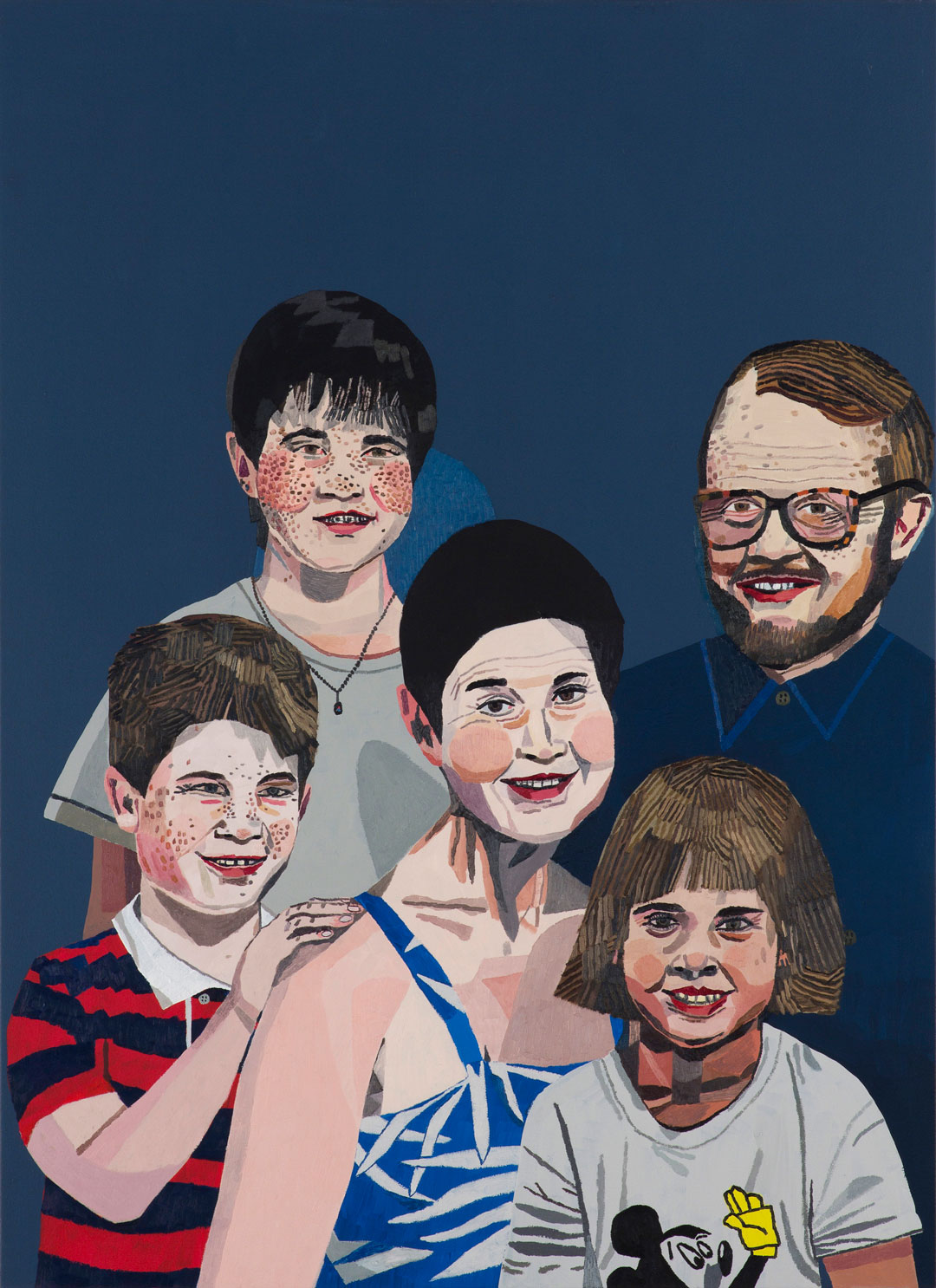
Jonas Wood’s painting of the basketball player Larry Bird contains one unusual ingredient “It was one of my first experiences with cocaine. I’d only been in LA for a year. I knew other people that would do drugs to finish their work, kids who were in grad school in California. It seemed like a part of their process – you know, in a bad way. I stayed up really late, I knew I wanted to finish the drawing, and did a bunch of drugs. The fact that I was in an altered state might have something to do with why it looks so trippy, although it’s also very romantic. In a way, it’s about Boston, and my youth, and hero worship. But it’s also about colour and flat amorphic shapes.”
Nigel Cooke has some interesting thoughts about Star Wars, and the way humour can be included in artworks without undermining more serious material “It’s perhaps an odd comparison, but in the first Star Wars films, there’s always the element of randomness and comedy to the actions of the good guys, which counters the ruthless commitment of the bad. The dark and the light exist perfectly alongside each other and represent different things. Darth Vader isn’t trivialized by the antics of Han Solo and Chewbacca, but they exist simultaneously.”
Jimmie Durham didn’t even let people look at an early series of works “I had a solo show at the University of Texas in Austin, maybe it was 1966 or 1967. I tried to get people to experience the work differently, so there was one set of objects that I made that were not to be looked at all, and I would take a small group into a private room and blindfold them and they had to feel the objects instead of looking at them. They never got to see what they looked like.”
A power cut led to one of Jessica Stockholder’s most enduring art-world memories “[American critic and philosopher] Fredric Jameson gave a wonderful lecture at Bard College in 1994. The lecture was outside – we were all sitting on the steps outside a building because there was a power outage; behind Jameson was a backdrop of trees and birds; the sun was slowly setting, and the moon was coming up. And he delivered his very abstract, formal, and organized lecture just as he would inside, only in this new context it was a completely other thing. The contrast between the formed, abstract thing that he was delivering, and how independent it was of wherever he was, and the birds, and his lectern being messed with while he was talking – for me that was beautiful. That this abstraction that he’s in the business of making coexisted with the trees, and the birds, and these things that are so easily romantic, was beautiful.”
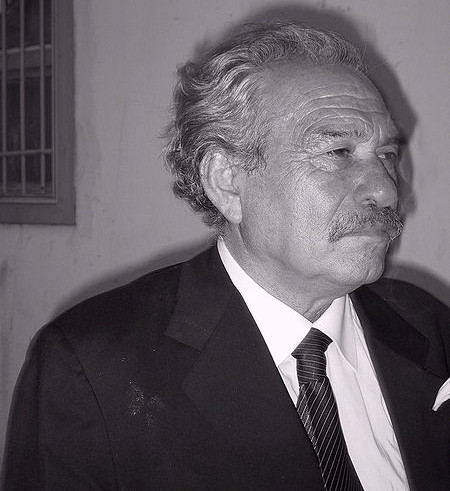
Arte Povera pioneer Jannis Kounellis was quite keen on a certain richly decorated, German building “A monument like the Cologne Cathedral indicates a centralization, encompasses a culture, and points the way for future development. Without signs like this we would run the risk of becoming nomads.”
Trevor Paglen’s artistic practices were informed by an early stint helping out at the Californian punk-rock venue, Gilman “Gilman was explicitly founded as an institution that politicized those communities by creating an alternative infrastructure. The club is all-ages, all volunteer run, and was built with anti-capitalist, anti-racist, anarcha-feminist values in mind. I spent several years running most of the shows, and participating in long Saturday afternoon meetings about the direction of the club. The other big influence that punk had on me was the idea that you could just ‘do’ stuff – the whole DIY attitude, I guess. Since then I’ve always been involved in organizing and building institutions, which comes pretty naturally to me.”
Adrian Villar Rojas takes comics very seriously “Comics, as a storytelling system based on pictograms and words and everything in between the two, moves easily among different states of language and skips through different moments in the history of our species’ commitment to communication, data creation, storage and transfer, given its amazingly variable and mutable level of iconicity. There’s also its use of writing, which in comics is traversed by words’ graphic materiality, plastically worked as drawing, as a scratch on a wall. In addition to this flexibility, there’s the use of time, from one panel to another in what’s known as ellipsis, but also inside the panels, a lesser known dimension that opens the entire range of ideas emerging from relativity theory, or at least from a post-Newtonian approach to space-time organization. Therefore, comics can be reconsidered as a communication system of high complexity, more similar to our current use of the internet than to our relationship with cinema or literature. It’s a polymorphic art, with a deeply subversive potential in regards to the stabilized and structured ways of positioning ourselves as readers-spectators.”
When she was at art school, Mona Hatoum slightly misused the NHS’s resources . “As a student at the Slade, I thought I was entitled to hassle the doctors at the University College Hospital across the road. They wouldn’t do the endoscopy on me, but I managed to get a sound recording of my heartbeat and stomach rumbles, which I used in Look No Body! and eventually in Corps étranger.”

A loophole in Peggy Guggenheim’s will enabled Jean-Michel Othoniel to stage a crucial show in Venice “At the time, the Guggenheim didn’t show contemporary artists in Venice. It only showed the collection as stipulated in Peggy’s will. I managed to exhibit thanks to Sandro Durso, a wonderful lawyer, and thanks to Sophie Angremy and Marie Brandolini, who loved my work. The lawyer had perused Peggy Guggenheim’s will, where all the furniture had been outlined – in the bedroom, dining room etc. – and nothing could be moved. But he’d found some trees that weren’t stipulated in the will. The discovery of this loophole amused the director so much that he took my project to the Board in New York, who ended up approving it. So, I was able to exhibit thanks to this omission in Peggy Guggenheim’s will – which was incredible. It was a first. No one had seen the work of a contemporary artist in her garden since her death.”
On Kawara helped Yayoi Kusama overcome a panic attack “After I moved to a larger studio, separated from Judd. Larry Rivers and John Chamberlain lived upstairs; On Kawara was across the hall from Chamberlain. One day I was struck by fear while I was standing in the building. I cried out: ‘I’m scared. Somebody, please come.’ There came Mr Kawara: ‘Don’t worry. No need to be scared, I am with you.’ He lay down with me. There was no sex but we held each other naked. He helped calm down my attack.”
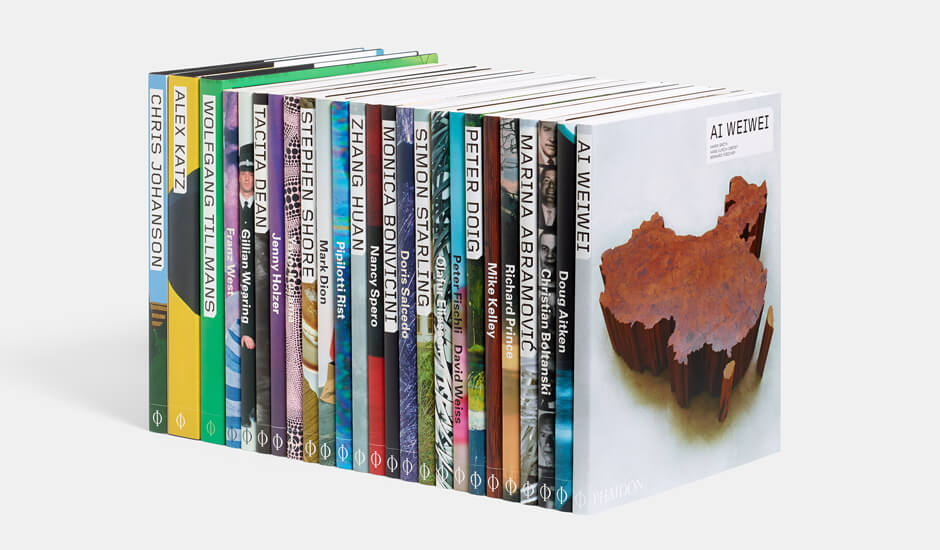
For countless further insights into the lives and work of today’s most important artists, take a look at our Contemporary Artist Series here.